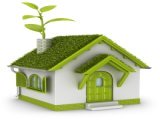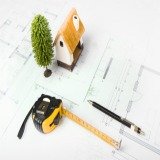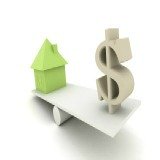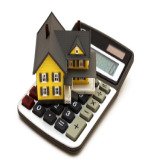Energy Efficient Home Plans
Energy efficient home plans are becoming very popular, but why are these homes in such high demand and what do they offer? This type of home is constructed to be very energy efficient, using different components, materials, technologies, and even alternative energy sources.
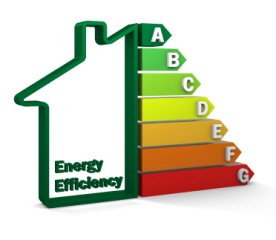 Homes which are very energy efficient offer a number of benefits, and this includes lower utility costs and a house which is more environmentally
friendly.
Homes which are very energy efficient offer a number of benefits, and this includes lower utility costs and a house which is more environmentally
friendly.
These homes offer the same comforts, but without the high energy use that other structure types may involve. This type of house can be built in almost any style or architectural design, and can work well in almost any area of the country as well.
Energy efficient home design involves the use of different components, which are combined to lower the energy needs of the home without sacrificing comfort or appeal. This can involve a number of methods, from the materials used, the layout of the floor plan, or the location of the home.
Global warming, fewer fossil fuel resources, and pollution are just a few of the factors which are addressed by a home which is highly energy efficient. The utility costs are also a factor, because these homes are very efficient and greatly reduce the heating, cooling, and even water costs that you may pay each month.
The Components of Energy Efficient Home Plans
There are many different components that can be used in the design of energy efficient home plans. Wind and solar energy sources can supplement the energy used from fossil fuels, reducing this use and the costs involved. Insulation, roofing types, and the materials used are also components which can be utilized to improve the energy efficiency of a home.
Vegetated roofs and energy efficient appliances, especially water heaters, can also play a big role in reducing the energy use of your home. No matter where you live in the US, there are components that you can include in the design of your home to make it more energy efficient, and lower your costs and the environmental impact of your home.
Not all of these components will be used in all energy efficient house plans. Each home is different and unique, and some components may fit well with the design and style of the home, while other energy efficient components may not be a good match.
Evaluate all of the possible components with the floor plan you have chosen, and then determine which ones fit well with the home of your dreams. The more of these components that a home has the lower your energy bills and use will be.
The Wind and Energy Efficient Home Design
The wind can be a terrific source of alternative energy, and many places across the United States have sufficient amounts of wind to be harnessed to make this effort effective. Energy efficient home plans can include having a wind turbine installed, or even a number of these machines, to capture the energy of the wind and use it to power your home.
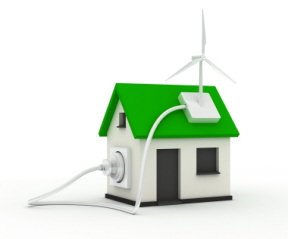
If your home will use a lot of energy then this can help you cut down on the amount you pay, and offset your usage. Homes with lower energy needs can even make a profit from this step, if the energy harnessed from the wind exceeds the amount used and the extra energy is sold to your local utility company.
Utilizing Solar Energy in Energy Efficient Home Plans
Solar energy is another alternative energy source that may be used with energy efficient house plans. Solar panels can be found in varying sizes, capabilities, and prices. The cost of solar panels shows how this technology can help make your home more energy efficient!
Solar energy will work better in some areas of the country than in others, because of the amount of sunlight each region receives on a typical day. In addition to solar panels, there are a number of appliances that can take advantage of solar energy to lower your total energy costs as well.
Controlling Storm Water Runoff with Energy Efficient Home Plans
One factor with energy efficient home design is water use and storm water runoff. With this type of home the goal is to control the storm water runoff, and to capture, recycle, and reuse as much of this water as possible. Many cities charge a storm water fee, and if your home has a system in place to control and recapture this water you may get a reduced fee in exchange, because the amount of storm water runoff your home contributes is minimized.
This system can include sand filters, ponds, rain gardens, reservoirs, and other components. These features capture the runoff before it enters the local storm water management system.
A quality water filtration system should be installed in energy efficient house plans, so that the water runoff can be filtered and used for purposes other than drinking. After filtration this water is safe for use in cleaning, laundry and dish washing purposes, and other needs that do not involve the consumption of the water.
This water can be used for plants, gardens, fountains, pools, and other places as well. Another benefit of storm water runoff management and recycling is the prevention of soil erosion, which can have a detrimental effect on the earth and the environment as well as the energy use of your home.
Energy Efficient House Plans and The Use of Vegetated Roofs
Vegetated roofs are a fairly new concept here in the US, and this unique and unusual option was first started in Europe. These roofs are also commonly called living roofs, green roofs, or eco roofs instead of vegetated roofs, and they offer a high degree of energy efficiency. Structures with traditional roofs will normally soak up the sun and then emit this energy in the form of heat, and this can be a big problem in many cities.
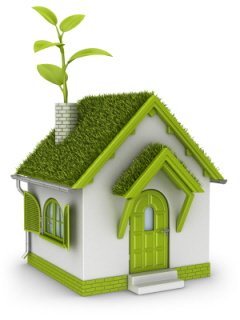
Energy efficient home plans with vegetated roofs use vegetation to eliminate this problem. A waterproof membrane is laid down to prevent any moisture from getting into the home, and this membrane is then covered with a layer of soil. Plants and vegetation is then planted in the soil.
Vegetated roofs are an excellent choice for energy efficient home design, because the cooling and heating load on your home is greatly reduced. In addition you can use almost any plants, and this can include fruits, vegetables, flowers, and ornamental varieties. The sunlight is absorbed by the plants, instead of entering into the home.
Another benefit that this roofing type offers is that it controls storm water runoff. The plants absorb the water and it soaks the soil underneath the vegetation, instead of flowing off the home and entering the storm drains. The vegetation also absorbs carbon from the air and produces oxygen, making this roofing type very environmentally friendly as well as energy efficient.
Water Heaters for Energy Efficient Home Plans
Energy efficient house plans will include the use of water heaters that are very efficient and have low energy use. There are three main types when it comes to hot water heaters that can help you conserve energy and cut your costs, and these are solar, tankless, and heat pump water heaters. Each of these uses a different technology, and offers different benefits and drawbacks. All three of these types are more energy efficient than the typical hot water heaters.
Heat Pump Water Heaters - These water heaters use technology that has only been used for cooling until now. These heaters draw in heat from the surrounding air, and can cycle through different operational stages automatically. Heat pump water heaters will normally use about one third to one half of the energy a traditional water heater uses, and can also help with cooling efforts at the same time.
Tankless Water Heaters - This type of water heater can be the most energy efficient. There is no storage tank, and instead the water is heated on demand, and only the amount required is heated up. This means no energy is needed to keep the water warm until it is needed, and your energy bills will normally go down substantially with this type of system in place.
Solar Water Heaters - A solar water heater will usually be more expensive to purchase, but cost less to run. These heaters rely on solar energy that is collected to heat the water and keep it warm until needed. Solar energy does not cost anything, but it is not always available either. This type of system usually requires a backup water heater that is not solar powered, for times when solar energy is not available and hot water is needed.
The Energy Efficiency of Spray Foam Polyurethane Insulation
Spray foam Polyurethane insulation can be perfect for energy efficient home plans. This type of insulation is used in cavities, wall interiors, and even small cracks and gaps to insulate and seal air at the same time. Spray foam insulation is available in two types, and this is closed cell and open cell.
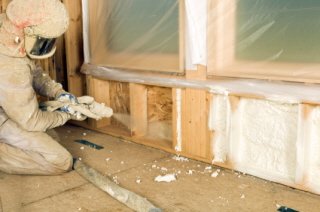
This insulation starts out as a liquid, and is pumped into any open areas in the walls and between structural components of the home. Once inside the liquid foams up and completely fills the space, so that no air can get in or out and there is a lot less energy loss and waste. Closed cell spray foam insulation is the most energy efficient, because it has a higher rating than the open cell variety.
Sprayed foam insulation will expand into any area, no matter how small or tight, and is a excellent wind barrier. When this type of insulation is used in energy efficient home plans it may be possible to use a smaller heating and cooling system, because of the high energy efficiency this foam can give a home.
This material does not biodegrade, and it will not shrink or settle to leave open gaps. This insulation type can be very friendly to the environment, and put a big dent in the energy costs of a home. The cost may be a little more than traditional fiberglass panels, but over time this material is very competitive where costs are concerned.
Reflective Roofs and Energy Efficient Home Plans
Reflective roofing material can play a big role in energy efficient home design. Reflective roofing is designed to reflect the heat of the sun instead of absorbing it, and this keeps the home cooler and lowers the energy use required to make the home atmosphere comfortable on the inside. Traditional roofing materials use gray and black as the primary colors, and both absorb more light than they reflect.
Metal and roof coatings which are white or light in color will reflect back most of the solar energy, instead of absorbing it into the home. This type of roofing is highly energy efficient, and while metal offers the best benefits it can be very expensive. Light reflective coatings can provide similar benefits for a lower cost. These materials are very durable and can lower your energy use and costs each year by a significant amount.
Energy Efficient Home Plans by US Region
Northern Region - In the northern USA home styles can include energy efficient water heaters, reflective coating, storm water runoff management and reuse, and even wind energy. Solar energy may not be ideal for all areas of the northern USA though, because some seasons have little sun and a lot of cloud cover.
Snow, freezing temperatures, and other climate conditions in this region may also limit the components included for energy efficient home plans. Most homes in this region are two story with steep roofs, and this factor plus the cold temperatures and inclement weather make vegetated roofs and solar energy use tricky.
Southern Region - The southern region of the United States has high temperatures and a substantial amount of sun, making energy efficiency important. Homes along the southern coast can include wind power, because of the almost constant ocean breeze, but the cost of this land type may make this method less than ideal.
Vegetated roofs and landscaping which minimizes water use and runoff are incorporated in many areas of the south, and reflective coatings or metal roofs are being considered in building codes to help minimize energy use in the homes in this region.
East Coast Region - The east coast of the US includes numerous home styles and designs which will fit well with certain energy efficiency components. Homes in this region include single and two story homes, and reflective roofing can help keep the home cool in the summer without a lot of energy use.
Tankless water heaters work well in this region and offer many savings, especially in cooler months. Some of the styles in this region could benefit from wind energy, but this may not be possible on small lots or in highly populated areas, and for many homes on the East Coast this is not an option. Steep roofs to eliminate snow also make vegetated roofs a poor choice for most homes in this region.
West Coast Region - The West Coast features extensive sun even in the winter months, and the styles in this region make solar power an excellent option in many areas. Many energy efficient home plans in this area of the USA have storm water runoff management systems in place to capture and reuse storm water, and landscaping to maximize this effect can be seen in a majority of the homes in this area.
Many homes use materials which are extremely energy efficient, such as adobe, stucco, concrete, and mud to minimize heating and cooling costs. Heat pump and solar water heaters can work very well in this region, and either reflective or vegetated roofs can also be a good choice to save on your home energy use.
Key Elements
Positive Features of Energy Efficient Home Plans
- Lower energy costs and less energy use
- Sprayed foam Polyurethane insulation combines insulating and air sealing
- Wind and solar energy can provide energy at no cost once the systems are installed
- Materials which are energy efficient are used for the structure, such as concrete, stucco, brick, adobe, and wood
- Vegetated roofs allow almost any types of plants to be grown in small and confined areas, while cutting down on the heating and cooling load of the home
- Energy efficient home plans reduces the use of valuable natural resources, making them last longer
- Less energy use means a home which is more environmentally friendly
- A heat pump water heater can cut the energy use to one third of a traditional water heater, and the same is true of a tankless system
- Solar water heaters can help supplement hot water without increasing energy use
- Strom water runoff management conserves water, and keeps this monthly bill down at the same time
- A storm water filtration system allows you to use rain water and storm runoff for almost any purpose, except for consumption.
- Reflective roofing materials can reduce the energy required for cooling the home by as much as sixty percent
- Existing homes can be renovated to include energy efficient components, without requiring the construction of a new home
- Drafts are eliminated, and it is easier to keep these homes comfortable in all types of weather
Negative Features of Energy Efficient Home Plans
- Solar water heaters cost more to purchase, and usually require a backup system for when solar energy is not available
- Wind energy is not possible in all areas of the United States, because some areas do not receive much wind each year. The same is true of solar power, so energy efficient home plans in these areas must use other components instead
- Vegetated roofs are not possible with every structure type, and there are special considerations that must be evaluated. These roofs may attract insects, and can be more expensive to maintain and repair
- There may be a higher initial cost to choose options and components which have a higher energy efficiency level, but this is normally offset by lower costs over the lifetime of the home
You Might Also Like:
Home Design Floor PlansHome Design Floor Plans |
Green Home DesignsGreen Home Design |
Boat Home PlansBoat Houses |
Return from Energy Efficient Home Plans to Green Home Plans
Return from Energy Efficient Home Plans to Home Plans Advisor

